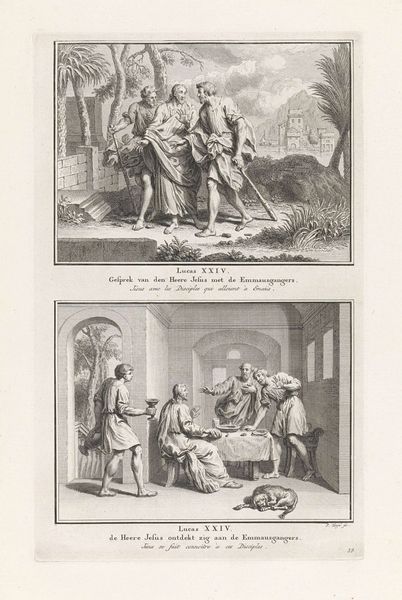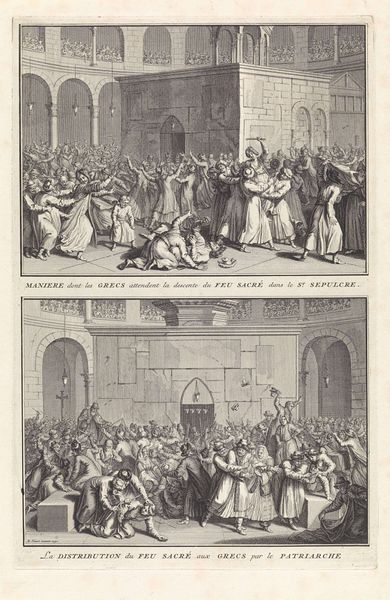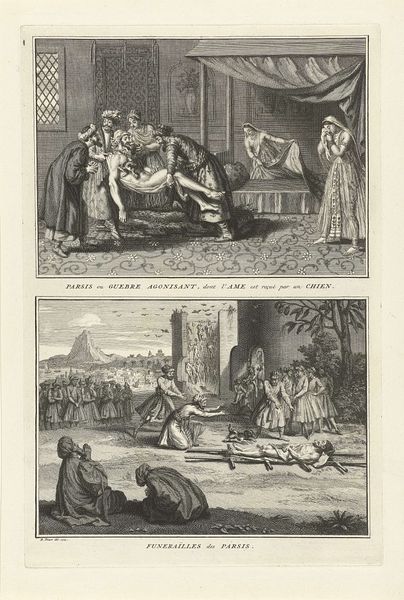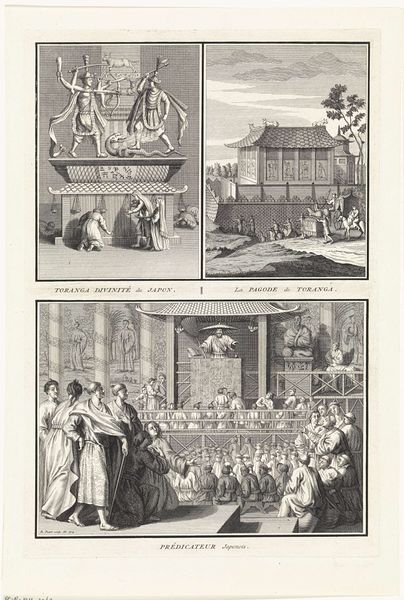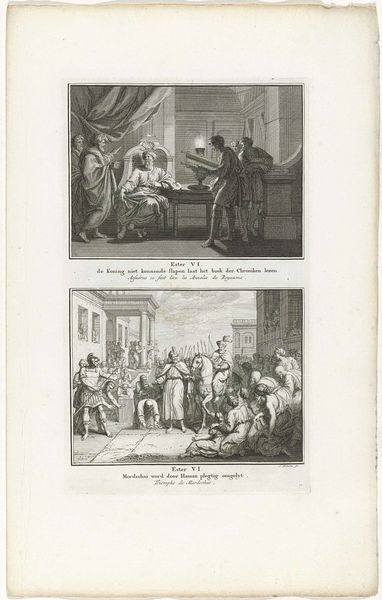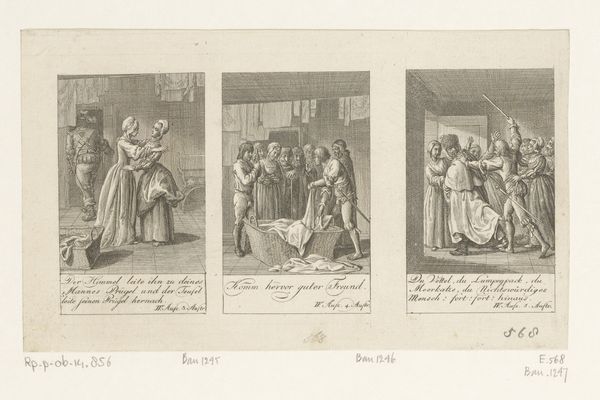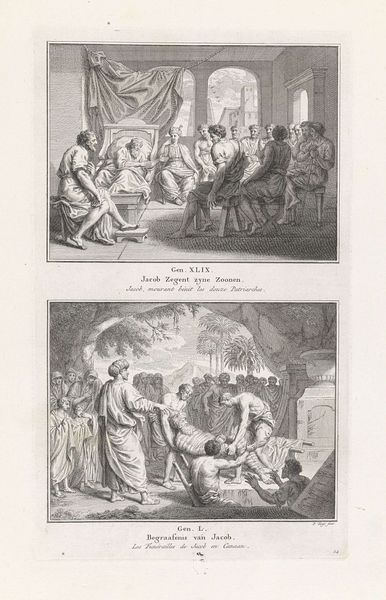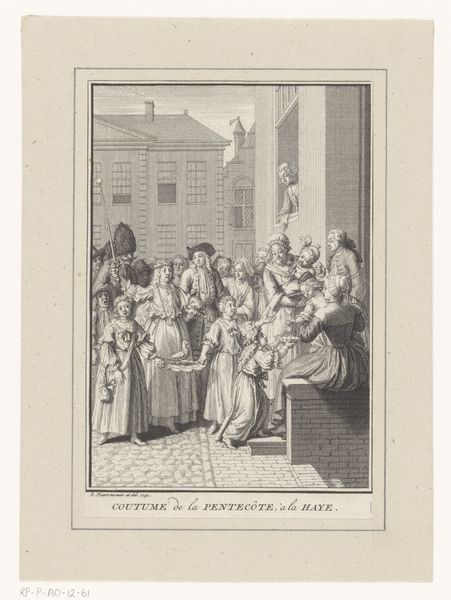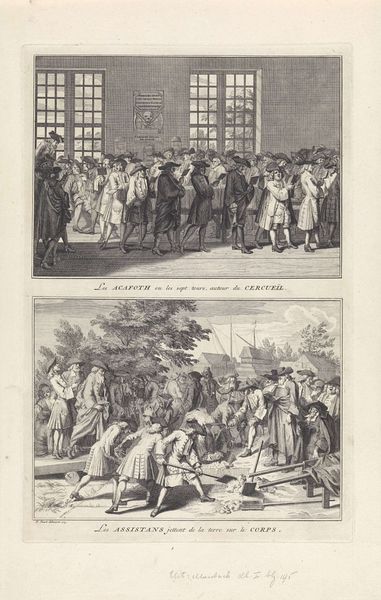
Voetwassing op Witte Donderdag en de aanbidding van het kruis op Goede Vrijdag 1724
0:00
0:00
print, engraving
#
narrative-art
#
baroque
# print
#
old engraving style
#
history-painting
#
engraving
Dimensions: height 336 mm, width 219 mm
Copyright: Rijks Museum: Open Domain
Editor: We’re looking at a print here in the Rijksmuseum titled "Voetwassing op Witte Donderdag en de aanbidding van het kruis op Goede Vrijdag," or "The Washing of Feet on Maundy Thursday and the Adoration of the Cross on Good Friday," created in 1724 by Bernard Picart. It's an engraving, and what immediately strikes me is the composition. It’s divided into two distinct scenes. How would you interpret this structuring of the imagery? Art Historian: The division certainly dictates our initial reading. Consider first the upper register. Notice how Picart orchestrates the figures; their gestures, directed glances, and implied movement collectively invite the eye to traverse the space. This creates a balanced and visually rhythmic experience. Note the expert use of hatching and cross-hatching to suggest form and texture. Does this linearity add or detract from the emotive potential? Editor: I see what you mean about the gestures guiding the eye. But with only monochrome to work with, wouldn’t it seem a limitation that it may restrict emotion by not being able to leverage warmer colors? Art Historian: Restraint can be expressive, if it emphasizes lines over shading. Are you observing here a baroque sensibility through its line quality, or could this work speak outside its artistic period? Note how the artist manages to suggest weight and volume despite a restricted palette. We can observe an elaborate and theatrical narrative with an attention to decorative details. What’s your take on the composition’s two part harmony of themes and scenes? Editor: Well, seeing them side-by-side really heightens the contrast between humility and adoration… I suppose it drives home the emotional breadth of Holy Week in a way a single image couldn’t. Art Historian: Precisely. Picart’s compositional choice and formal control effectively conveys complex thematic elements. Through astute formal arrangements, narrative complexities reveal themselves to a contemplative viewing. A clear demonstration of how attention to these components makes any artwork distinct. Editor: It's interesting how just focusing on the visual elements can reveal so much about the artwork's message. Thanks for walking me through your methods and for your expert eye. Art Historian: A pleasure to share my thoughts.
Comments
No comments
Be the first to comment and join the conversation on the ultimate creative platform.


